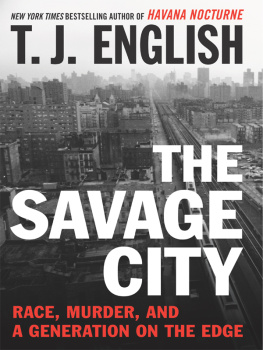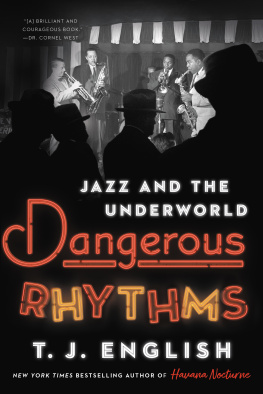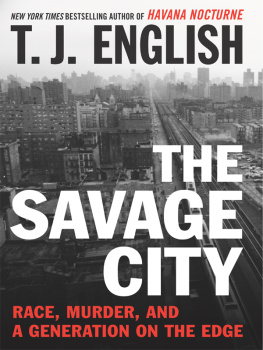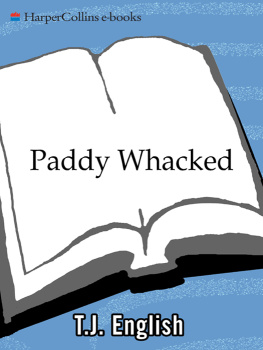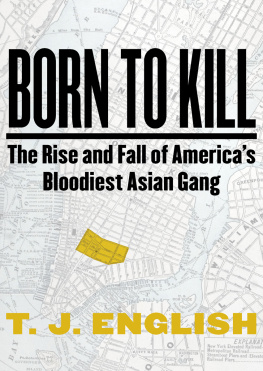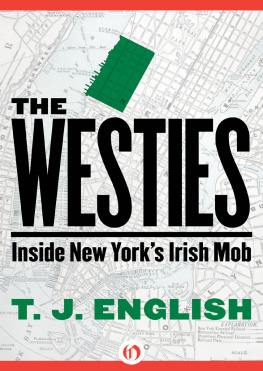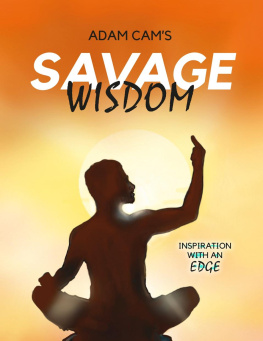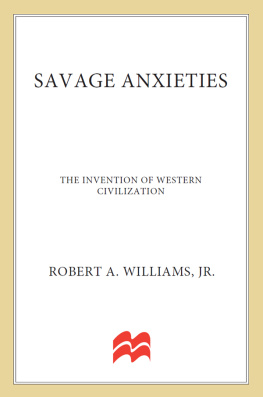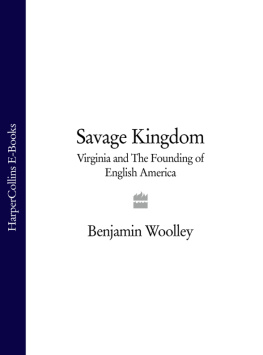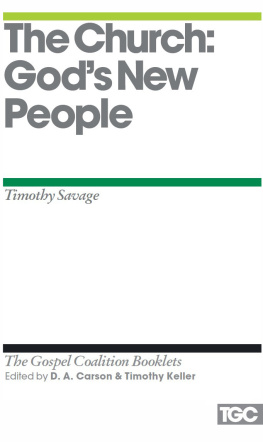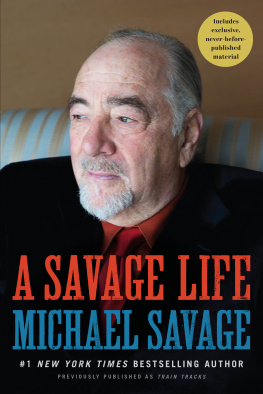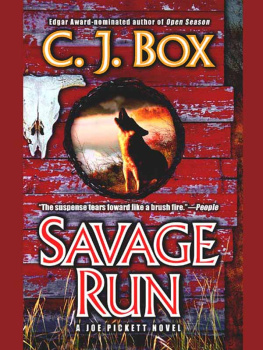T. J. English - The Savage City
Here you can read online T. J. English - The Savage City full text of the book (entire story) in english for free. Download pdf and epub, get meaning, cover and reviews about this ebook. publisher: HarperCollins US, genre: Detective and thriller. Description of the work, (preface) as well as reviews are available. Best literature library LitArk.com created for fans of good reading and offers a wide selection of genres:
Romance novel
Science fiction
Adventure
Detective
Science
History
Home and family
Prose
Art
Politics
Computer
Non-fiction
Religion
Business
Children
Humor
Choose a favorite category and find really read worthwhile books. Enjoy immersion in the world of imagination, feel the emotions of the characters or learn something new for yourself, make an fascinating discovery.
- Book:The Savage City
- Author:
- Publisher:HarperCollins US
- Genre:
- Rating:4 / 5
- Favourites:Add to favourites
- Your mark:
- 80
- 1
- 2
- 3
- 4
- 5
The Savage City: summary, description and annotation
We offer to read an annotation, description, summary or preface (depends on what the author of the book "The Savage City" wrote himself). If you haven't found the necessary information about the book — write in the comments, we will try to find it.
The Savage City — read online for free the complete book (whole text) full work
Below is the text of the book, divided by pages. System saving the place of the last page read, allows you to conveniently read the book "The Savage City" online for free, without having to search again every time where you left off. Put a bookmark, and you can go to the page where you finished reading at any time.
Font size:
Interval:
Bookmark:

For George Whitmore
THE STREETS OF New York City are saturated with blood.
This is more than a metaphor. In the largest city in the United States, generations of inhabitants have given their lives to the wheels of progress. They have been struck and killed by taxis, buses, or subway trains; thrown off buildings onto the sidewalk below; trapped in burning tenements and charred to death; blown up by exploding manhole covers; electrocuted by falling telephone wires; mugged, stabbed, or shot by depraved and desperate criminals; shot dead in the street by family members or other loved ones; shot dead by police officers; even incinerated by terrorists flying jetliners into the side of a building.
Untold thousands, perhaps millions, have fallen prey to the perils of municipal dysfunction, to the growing pains of a city forced to adjust to violent demographic shifts, internal hostilities, wrenching social changes anticipated by no one.
In recent years, New York has been promoted as the Safest Big City in America. This claim is made without irony, as if the previous fifty years of the citys existence were nothing more than a bad dream.
Yet it was not so long ago that the city was perched on the brink of self-immolation. Beginning in the early 1960s, a mood of uncertainty and menace entered the bloodstream of the great metropolis. The result was a spiraling crime rate unlike anything the city had seen before. For the first time since the years of the Great Depression, the violence became a daily reality throughout the five boroughs, something you could reach out and touch. Citizens walking to the corner deli after dark were mugged or shanked for the change in their pockets. Dope fiends, armed and dangerous, climbed over rooftops and down fire escapes to steal valuables from apartments, offices, and cars. Rapists walked around with their dicks hanging out. There was all manner of homicide, the plaintive sound of sirens in the night, the rancid smell of a city that had begun to rot.
This book covers the ten-year period when New York City began its now-legendary descent into mayhem. From 1963 to 1973, crime became a viral infection that gripped the body politic. The shocking upsurge in predatory violence led to fear, and that fear led to more violence. Free-flowing hostility among the citys inhabitants fueled the paranoiac mood. Longtime residents sensed that the city was entering a period of transition and were troubled by the prospect. The best that could be said was that New York was going through some kind of evolution, pushing itself toward somethingbut what? Urban hell on earth? Armageddon? Better days in the afterlife?
The city had always been a complex organism. It had endured its share of growing pains before, often involving the cycles of violence and fear that were the consequence of an evolutionary process. A city could attempt to manage and control the potential for crime and danger within its city limits, but no municipal government, no citizens action group, can fully foresee the larger trends that shape an urban universe from the outside. The era of turmoil that began in 1963 had many internal factorssome of which will be detailed in this bookbut one event that would reshape the city in surprising ways occurred hundreds of miles away, in a dusty hamlet outside the town of Clarksdale, Mississippi.
On October 2, 1944, just outside town on Highway 49, a crowd of people gathered on a modest plantation to see the very first public demonstration of a working, production-ready mechanical cotton picker. At that moment, two hundred and forty miles from midtown Manhattan, a demographic bomb exploded that sent seismic waves out across the United States. Every region and most cities would be affected, but none more so than northern industrial centers like New York.
For generations, cotton picking in the South had been a source of employment and servitude for the descendants of slaves, who had survived all manner of human horror to find themselves at the mercy of the system known as sharecropping. The workers who spent long, back-breaking days in the fields, picking cotton by hand, received abysmal paysometimes as low as five dollars a weekbut it was a means of subsistence for those whose forebearers had been denied the forty acres and a mule promised to them after Emancipation.
The mechanical cotton picker was a godsend to the planters. An efficient field hand could pick twenty pounds of cotton in an hour. A mechanical cotton picker harvested as much as a thousand poundstwo balesin that same time. One Mississippi plantation owner estimated that picking a bale of cotton by machine cost him $5.26, while picking it by hand cost $39.41. Each machine did the work of fifty people.
The mechanical cotton picker made sharecropping obsolete. With their primary form of livelihood eliminated virtually overnight, rural African Americans in the South had little choice but to head out into the great unknown in search of a new life. Most headed north to the Promised Land of industry and factory employment. This great black migration, since chronicled and studied in countless works of history, was one of the largest and most rapid internal movements of people in historyperhaps the greatest such shift not caused by a natural catastrophe or immediate threat of disease or starvation.
In New York City, the waves of black migrants from the South began flooding in by the late 1940s. New York had Harlem, the preeminent African American neighborhood and cultural center in the United States. But the infusion of migrants over the next twenty-five years was far too vast for any one neighborhood to absorb. Blacks began settling on the fringes of white working-class neighborhoods throughout the citys five boroughs, but nowhere was the transformation more startling than in Brooklyn.
The Borough of Churcheswhich had been its own city until its incorporation into New York City in 1898had been home to generations of Irish, Italians, and Eastern European Jews. Now, older residents who had lived in Brooklyn since the 1920s, 1930s, or 1940s were shocked to find their neighborhoods on the receiving end of a massive migration of poor, desperate Negroes from the Southalong with a significant migration of Puerto Ricans, who were fleeing the impoverished Caribbean island, part of the U.S. commonwealth. Some lower-middle-class white communities in Brooklyn already suffered from poverty and municipal neglect; the latent, free-floating bitterness among their residents soon turned to aggressive anger toward the alien horde of niggers and spics who wereseeminglybeing dumped onto their streets by the thousands each month.
Some whites stayed and resisted the tides of change, but most fled. In three Brooklyn neighborhoodsBrownsville, Bushwick, and East New Yorkthe transition was catastrophic. Over a five-year period in the early 1960s, the neighborhood of East New York went from being 80 percent white to 80 percent black and Puerto Rican. There were no social programs to deal with this unprecedented shift in the communitys racial composition. The new arrivals were met mostly with a potent mixture of fear, hostility, and outright racisma combination the Negroes found all too familiar.
There was no Ku Klux Klan in New York. There was something more overt: the New York City Police Department. By the early 1960s, the NYPD had evolved into a largely autonomous institution, whose officers and beat cops did things their own way. For generations, when it came to dealing with black people, that way generally involved brute force. Over the next ten years, hostilities between blacks and the police in New York would finally come to a head, with casualties on both sides and severe repercussions for the city as a whole.
Font size:
Interval:
Bookmark:
Similar books «The Savage City»
Look at similar books to The Savage City. We have selected literature similar in name and meaning in the hope of providing readers with more options to find new, interesting, not yet read works.
Discussion, reviews of the book The Savage City and just readers' own opinions. Leave your comments, write what you think about the work, its meaning or the main characters. Specify what exactly you liked and what you didn't like, and why you think so.

